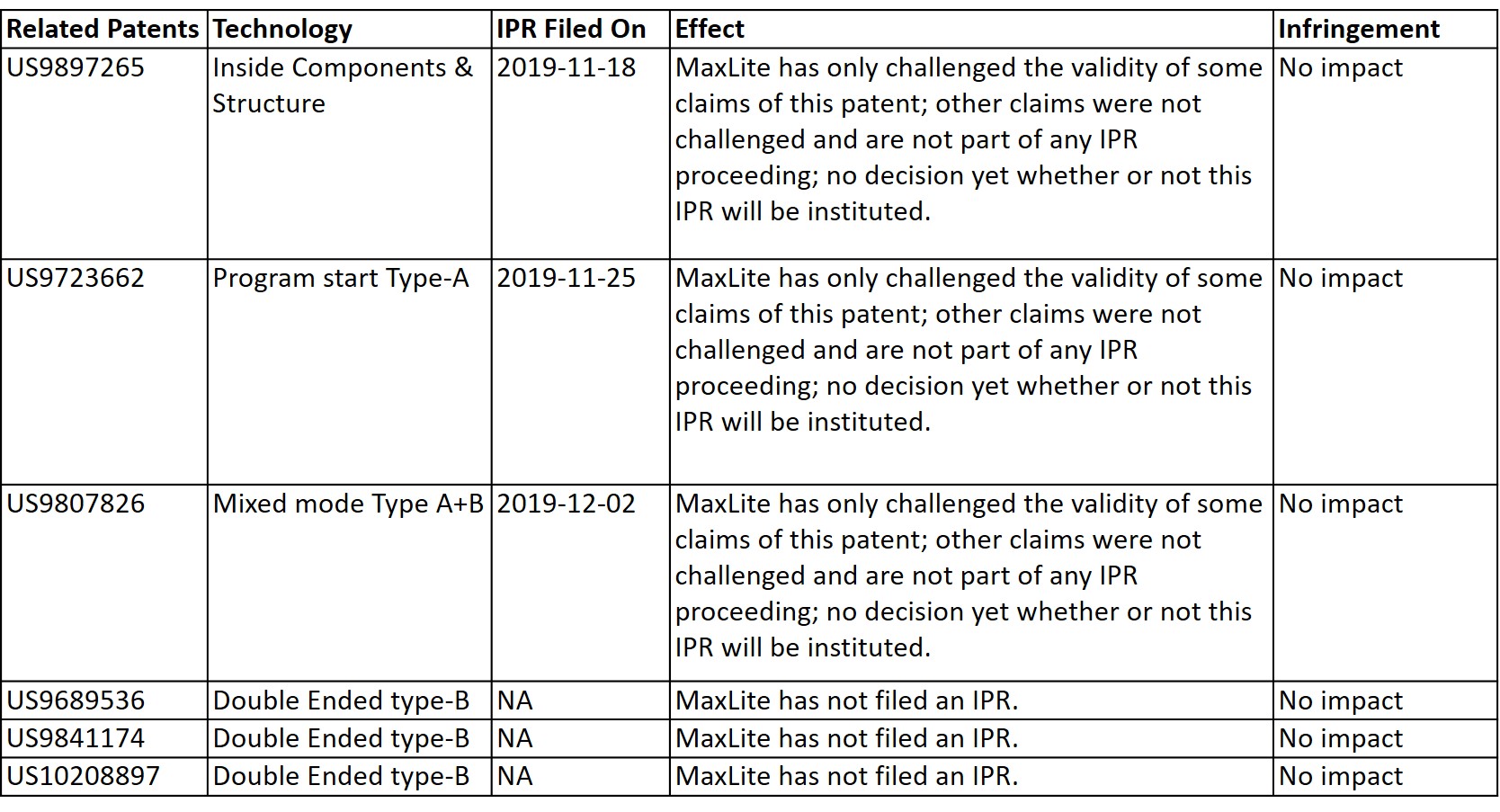On December 5, 2019, Judge Gutierrez of the Central District of California issued the case schedule in Jiaxing Super Lighting Electric Appliance and its U.S. affiliate Obert (collectively “Super Lighting”) patent infringement case against MaxLite. (Case No. CV 19-4047-PSG).
Notably, the Court set the following upcoming deadlines:
• June 8, 2020 Markman hearing, where the Court will construe the terms of Super Lighting’s six patents related to LED tube lighting technologies.
• February 16, 2021 jury trial, where Super Lighting will present its infringement and damages case to the jury. Following a successful jury trial, Super Lighting would ask the Court to enjoin MaxLite from importing and selling the accused products in the United States.
Super Lighting filed a patent infringement lawsuit in the United States District Court for the Central District of California against MaxLite. on May 8, 2019. In the litigation, Super Lighting asserts that double ended Type B tube LED (Ballast Bypass), Program Start Type A tube LED (Direct Replacement), and mixed mode tube LED (Type A + Type B) products sold by MaxLite infringe Super Lighting’s patents. These patents cover various LED tube lighting technologies including, for example the safe installation of LED tube lamps, efficient heat dissipation, compatibility and power modules for LED tube lamps. Super Lighting asked the Court to stop MaxLite’s infringing activities and to award Super Lighting damages.
In the litigation, Super Lighting alleged that MaxLite is infringing six of Super Lighting’s U.S. patents, including Pat. Nos. 9,689,536, 9,841,174, 9,723,662, 10,208,897, 9,807,826, and 9,897,265 by importing, selling, and using its LED tube products.

MaxLite petitioned for Inter Partes Review (IPR) with the United States Patent and Trademark Office (PTO) on three of the six alleged patents and requested the PTO reconsider the validity of some of the claims of these three patents. IPR is a common technique used by some defendants in patent infringement lawsuits and can sometimes cause delay in litigation. The IPR procedure generally takes about 6 months from petition to institution, and if institution (which is not guaranteed) about one year from institution to final written decision. Not all IPR petitions are instituted, some might be instituted, and some might be not instituted. Even if an IPR is instituted, the petitioner must provide sufficient evidence to meet its burden to persuade the PTO of its position. As MaxLite petitioned against only some of the claims asserted in the litigation between the parties, the PTO will only rule on these claims even if the petitions were instituted. Super Lighting believes that all three patents stand valid and MaxLite products are infringing. The other three patents Super Lighting asserts in the litigation are not involved in any IPR.
Super Lighting has developed a broad patent portfolio and holds more than one hundred US patents and patent applications on tube lighting products. For example, the double-ended Type B tube LED with Detector (DE-BP) products were originally designed (from 0 to 1) developed and promoted by Super Lighting.
Super Lighting will actively fight against infringement to prevent the distribution of infringing products. If any other companies are found selling infringing products in the market, Super lighting will take all necessary steps to protect its patent rights and to preserve the benefit and interests of Super Lighting’s customers.












